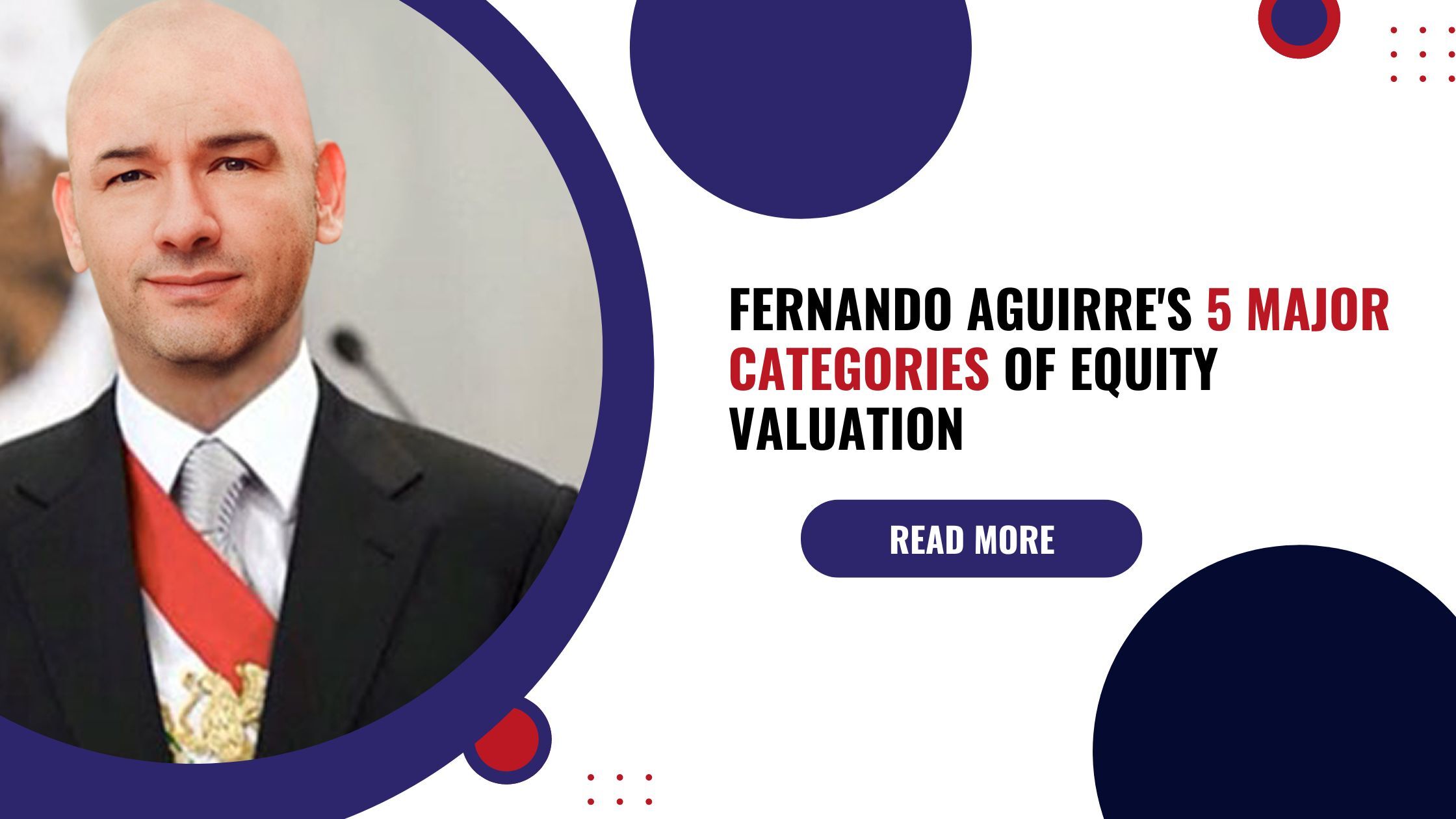In the realm of investing, understanding the true value of a company’s stock is paramount. Renowned investor Fernando Aguirre, drawing from his extensive experience spanning over two decades, has meticulously categorized equity valuation into five major categories. In this article, we embark on a journey to unravel these categories, exploring the methodologies and insights they offer to investors navigating the dynamic landscape of equity markets.
1. Intrinsic Valuation: Unveiling the Company’s Essence
At the heart of Fernando Aguirre’s framework lies intrinsic valuation, which delves into the fundamental essence of a company. Intrinsic valuation models, such as discounted cash flow (DCF) analysis and dividend discount models (DDM), seek to determine the intrinsic value of a company’s stock based on its expected future cash flows. Aguirre emphasizes the importance of thorough analysis, considering factors such as revenue growth, profitability, and capital expenditure. By focusing on intrinsic value, investors can uncover hidden gems and make informed investment decisions based on a company’s long-term prospects rather than short-term market fluctuations.
2. Relative Valuation: Benchmarking Against Peers
Relative valuation provides investors with a comparative perspective by benchmarking a company’s valuation metrics against those of its peers or industry benchmarks. Common metrics include the price-to-earnings (P/E) ratio, price-to-book (P/B) ratio, and enterprise value-to-EBITDA (EV/EBITDA) ratio. Fernando Aguirre highlights the utility of relative valuation in identifying mispriced stocks and assessing a company’s valuation relative to its peers. However, Aguirre advises caution, emphasizing the importance of selecting appropriate comparables and considering qualitative factors alongside quantitative metrics for a comprehensive analysis.
3. Asset-Based Valuation: Appraising Tangible and Intangible Assets
Asset-based valuation focuses on assessing a company’s worth based on the value of its tangible and intangible assets. Tangible assets include property, plant, and equipment (PP&E), while intangible assets encompass intellectual property, brand equity, and goodwill. Fernando Aguirre acknowledges the relevance of asset-based valuation, particularly in industries where asset values play a significant role, such as manufacturing and technology. Aguirre advises investors to conduct thorough due diligence, accounting for asset impairments and market conditions, to arrive at an accurate assessment of a company’s intrinsic worth.
4. Market Efficiency-Based Valuation: Gauging Market Sentiment
Market efficiency-based valuation models, such as the Capital Asset Pricing Model (CAPM) and the Arbitrage Pricing Theory (APT), leverage market pricing information to assess a company’s valuation. These models incorporate factors such as risk and return expectations, market risk premiums, and beta coefficients. Fernando Aguirre recognizes the importance of market efficiency-based models in estimating the cost of equity and evaluating investment opportunities within the context of broader market dynamics. However, Aguirre advises investors to interpret model outputs cautiously, supplementing market efficiency-based valuation with other approaches for a comprehensive analysis.
5. Option Pricing Models: Valuing Complexity with Precision
Option pricing models extend the principles of financial options pricing to equity valuation, particularly in valuing complex securities with embedded options. These models, such as the Black-Scholes model, are invaluable in valuing convertible bonds, employee stock options, and other derivative instruments. Fernando Aguirre emphasizes the importance of understanding the underlying assumptions and limitations of option pricing models, particularly regarding volatility estimation and dividend treatment. By leveraging option pricing models, investors can accurately assess the value of complex securities and make informed investment decisions.
Conclusion
As we conclude our exploration of Fernando Aguirre’s five major categories of equity valuation, it becomes evident that mastering valuation is both an art and a science. By embracing intrinsic valuation, relative valuation, asset-based valuation, market efficiency-based valuation, and option pricing models, investors can gain a comprehensive understanding of a company’s true worth and make informed investment decisions. Aguirre’s insights serve as a beacon of guidance in the vast sea of equity markets, empowering investors to navigate with confidence and precision in pursuit of financial success.










